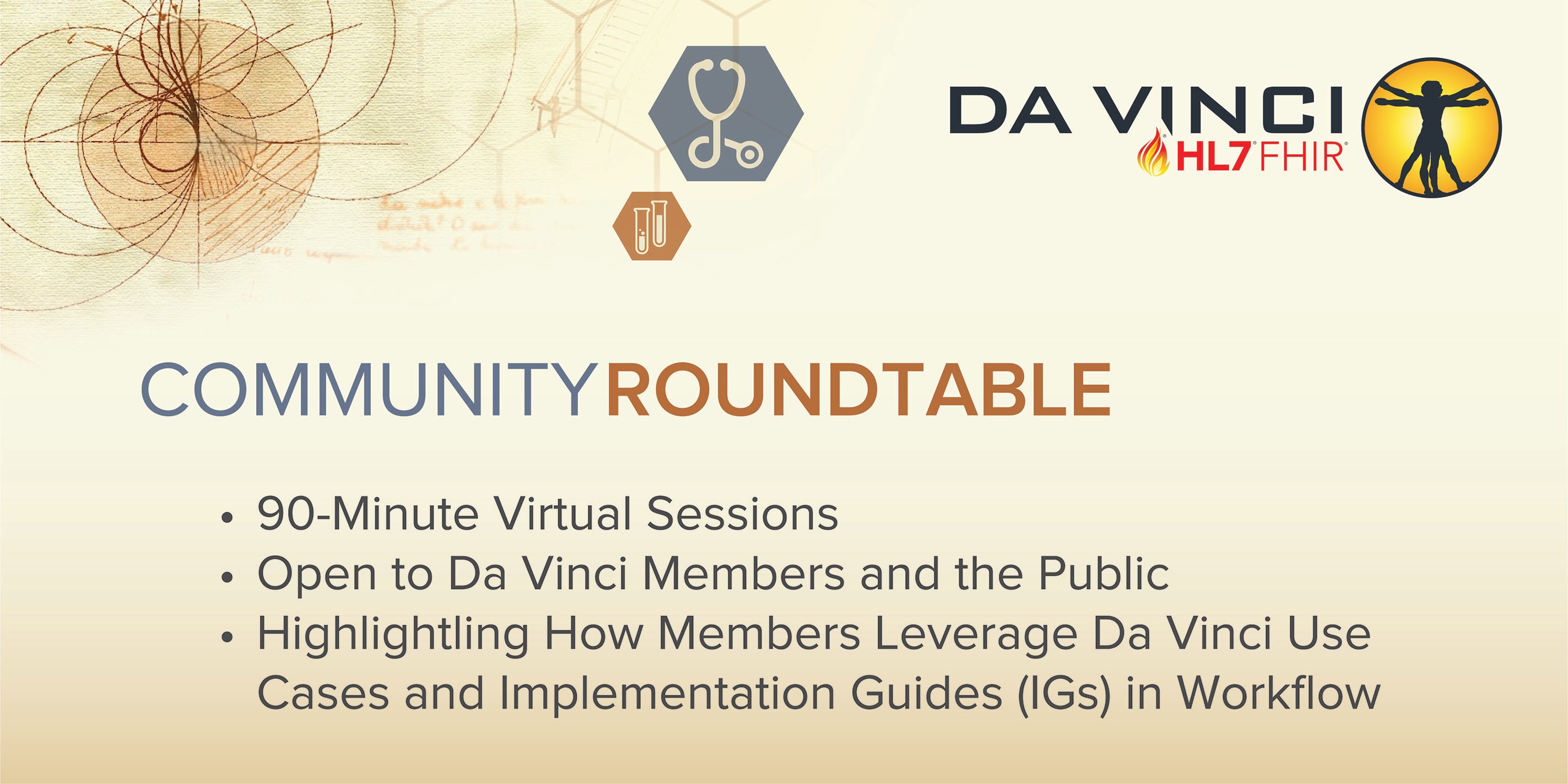The Da Vinci Project’s March Community Roundtable to be held March 30 from 4:00 – 5:30 p.m. ET
Invite your product and technical teams to register for March's HL7 Da Vinci Project Community Roundtable Ready, Set, Test: Prepare Now to Test Da Vinci Implementation Guides.
This essential primer will delve into the IGs and help you identify what you want to test, who needs to be involved, and the tools involved in the testing process so that you are prepared for HL7 and CMS Connectathons.
This session will provide brief updates on Implementation Guides (IGs) and use cases as well as resources to aid testing and Connectathon preparation efforts.
With this basic knowledge you can create your own roadmap to readiness while helping improve industry interoperability.
Speakers:- Vanessa Candelora, HL7 Da Vinci Project Manager, and Senior Consultant, Point-of-Care-Partners
- Robert Dieterle, Da Vinci Sr. Advisor and Chief Executive Officer, EnableCare, LLC
- Yan Heras, HL7 Da Vinci Project Lead and Technical Advisor, and Principal Informaticist, Optimum eHealth



